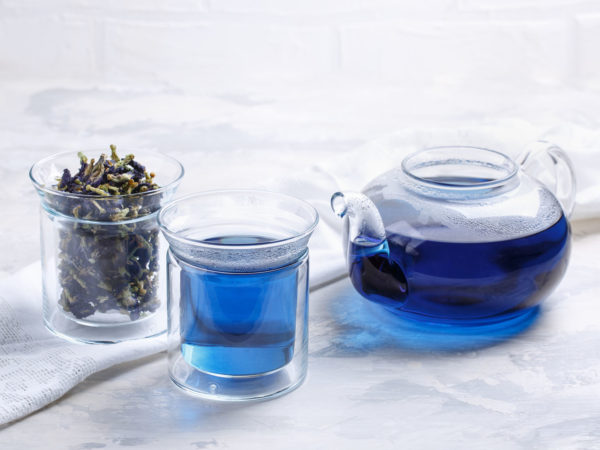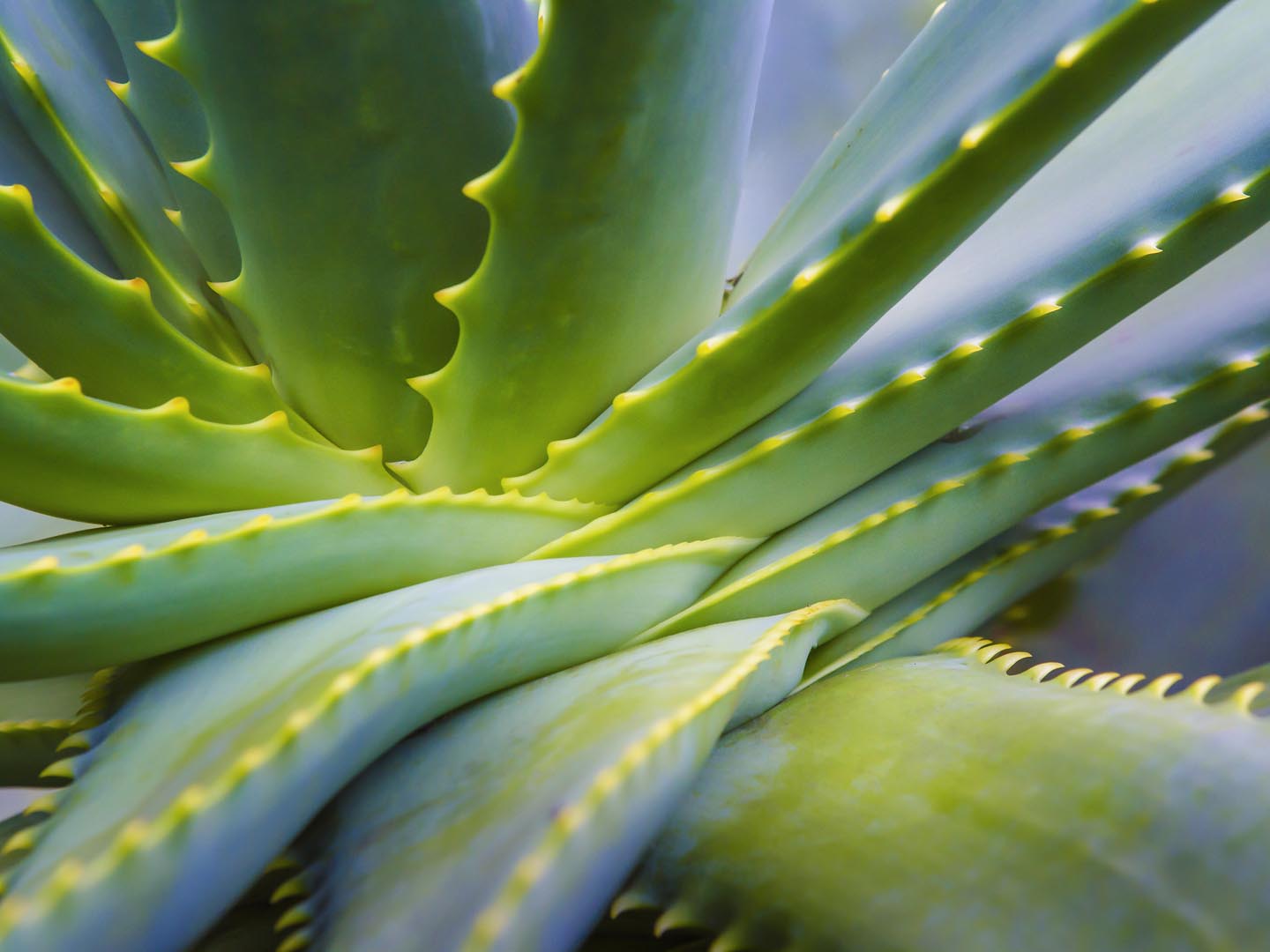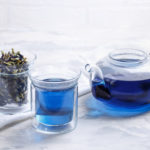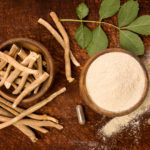Are There Benefits Of Butterfly Pea Tea?
I’ve been reading about “butterfly pea” tea and its anti-inflammatory effects. Should I be drinking it?
Andrew Weil, M.D. | July 11, 2024

The vibrant blue flowers of the butterfly pea (Clitoria ternatea), which grows primarily in Southeast Asia, owe their color to anthocyanins, pigments found in many fruits and vegetables that range from red to purple to blue. The extracted pigment of the butterfly pea flower is used commercially as a natural blue color in foods and cocktails as an alternative to synthetic dyes. Because anthocyanins have antioxidant properties and since butterfly pea has long been used in traditional medicine, it has also been studied for a potential role in health and nutrition, but I do not believe there is solid evidence yet for such benefits.
There are hundreds of different types of anthocyanins. Those found in the butterfly pea are known as ternatins, which have been found in some studies to help prevent cardiovascular and neurological diseases, cancer, and diabetes; they may have antioxidant, antidiabetic, antimicrobial, and anti-inflammatory properties. It is not clear, however, that the general effects of ternatins translate into health benefits of a blue tea.
There have been several published studies on the potential benefits of butterfly pea extract, but I find that they offer scant evidence for health claims:
- In one 2018 study of 15 men who drank a sugar-water mixture, followed by different combinations of Clitoria ternatea extract and water, the results suggested that the extract solution moderated glucose and insulin levels over a three-hour study period.
- A 2019 molecular study showed that butterfly pea tea may play a role in inhibiting the development of fat cells in a laboratory setting.
- A study of 32 rats published in 2021 looked at the effects of Clitoria ternatea extract on high blood pressure and found that rats given the extract had some protection against induced hypertension.
- A 2023 study of rat behavior a few weeks after the animals were given bio-enhanced doses of Clitoria ternateashowed some indication that the extract improved memory and cognition.
It is a large leap to go from studies like these to the kinds of health claims found in marketing materials for butterfly pea tea – especially when evidence is so abundant for the benefits of green tea.
It’s also important to note that the blue pigment must be extracted from the butterfly pea, and that the extraction method affects the quality and concentration of anthocyanins in the final product. Even if the compounds in the extract have health benefits, they may not be present in tea in the amounts needed to make any difference.
It’s wise to remember that studies done in laboratories investigating the chemical properties of molecules and compounds, are not necessarily evidence of how a supplement or a tea might benefit people. Reliable studies in humans are designed to look at large populations over time. Without larger-scale human studies I can’t recommend butterfly pea products to improve health. The tea is generally considered safe, so you can consume it in moderation if you enjoy it (unless you are pregnant or breastfeeding). I’ll stick with green tea. (For more, read My Life With Tea.)
Andrew Weil, M.D.
Sources
Chusak C, Thilavech T, Henry CJ, Adisakwattana S. “Acute effect of Clitoria ternatea flower beverage on glycemic response and antioxidant capacity in healthy subjects: a randomized crossover trial.” BMC Complement Altern Med. 2018 Jan 8;18(1):6. doi: 10.1186/s12906-017-2075-7. PMID: 29310631; PMCID: PMC5759795. hncbi.nlm.nih/pmc/articles/PMC5759795/
Chayaratanasin P, Caobi A, Suparpprom C, Saenset S, Pasukamonset P, Suanpairintr N, Barbieri MA, Adisakwattana S. “Clitoria ternatea Flower Petal Extract Inhibits Adipogenesis and Lipid Accumulation in 3T3-L1 Preadipocytes by Downregulating Adipogenic Gene Expression.” Molecules. 2019 May 17;24(10):1894. doi: 10.3390/molecules24101894. PMID: 31108834; PMCID: PMC6571662. ncbi.nlm.nih/pmc/articles/PMC6571662/
Ahad MA, Chear NJ, Keat LG, Has ATC, Murugaiyah V, Hassan Z. “Bio-enhanced fraction from Clitoria ternatea root extract ameliorates cognitive functions and in vivo hippocampal neuroplasticity in chronic cerebral hypoperfusion rat model.” Ageing Res Rev. 2023 Aug;89:101990. doi: 10.1016/j.arr.2023.101990. Epub 2023 Jun 19. PMID: 37343678. pubmed.ncbi.nlm.nih/37343678/
Maneesai P, Iampanichakul M, Chaihongsa N, Poasakate A, Potue P, Rattanakanokchai S, Bunbupha S, Chiangsaen P, Pakdeechote P. “Butterfly Pea Flower (Clitoria ternatea Linn.) Extract Ameliorates Cardiovascular Dysfunction and Oxidative Stress in Nitric Oxide-Deficient Hypertensive Rats.” Antioxidants (Basel). 2021 Mar 27;10(4):523. doi: 10.3390/antiox10040523. PMID: 33801631; PMCID: PMC8065438. https://pubmed.ncbi.nlm.nih.gov/33801631/
Vidana Gamage GC, Lim YY, Choo WS. “Anthocyanins From Clitoria ternatea Flower: Biosynthesis, Extraction, Stability, Antioxidant Activity, and Applications.” Front Plant Sci. 2021 Dec 17;12:792303. doi: 10.3389/fpls.2021.792303. PMID: 34975979; PMCID: PMC8718764. pubmed.ncbi.nlm.nih/34975979/
Khoo HE, Azlan A, Tang ST, Lim SM. “Anthocyanidins and anthocyanins: colored pigments as food, pharmaceutical ingredients, and the potential health benefits.” Food Nutr Res. 2017 Aug 13;61(1):1361779. doi: 10.1080/16546628.2017.1361779. PMID: 28970777; PMCID: PMC5613902. pubmed.ncbi.nlm.nih/28970777/
Mattioli R, Francioso A, Mosca L, Silva P. “Anthocyanins: A Comprehensive Review of Their Chemical Properties and Health Effects on Cardiovascular and Neurodegenerative Diseases.” Molecules. 2020 Aug 21;25(17):3809. doi: 10.3390/molecules25173809. PMID: 32825684; PMCID: PMC7504512. ncbi.nlm.nih/pmc/articles/PMC7504512/
Câmara JS, Locatelli M, Pereira JAM, Oliveira H, Arlorio M, Fernandes I, Perestrelo R, Freitas V, Bordiga M. “Behind the Scenes of Anthocyanins-From the Health Benefits to Potential Applications in Food, Pharmaceutical and Cosmetic Fields.” Nutrients. 2022 Dec 2;14(23):5133. doi: 10.3390/nu14235133. PMID: 36501163; PMCID: PMC9738495. pubmed.ncbi.nlm.nih/36501163/
Fu X, Wu Q, Wang J, Chen Y, Zhu G, Zhu Z. “Spectral Characteristic, Storage Stability and Antioxidant Properties of Anthocyanin Extracts from Flowers of Butterfly Pea (Clitoria ternatea L.).” Molecules. 2021; 26(22):7000. doi/10.3390/molecules26227000 pubmed.ncbi.nlm.nih/34834097/












